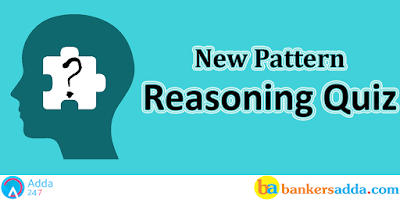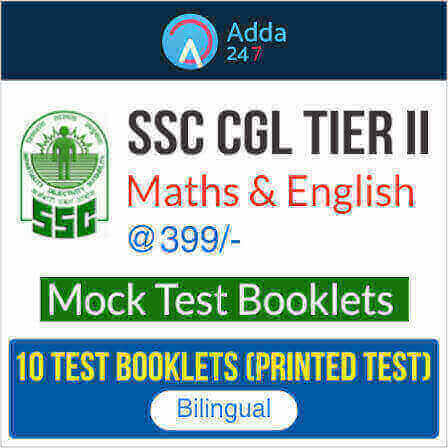Dear Readers,
The reasoning is a game of wits and presence of mind! Yes, it is true and it might seem as the greatest of the challenge after English Section’s surprises but yet this one can easily be dealt with. You just need correct practice and hardwire your brain to quickly make decisions of what to attempt and what to leave. And for same we are providing you questions of Reasoning Question and Answers. Solve these to Practice latest pattern reasoning question for bank exams.
Directions (1-5): Study the following information carefully and answer the questions given below:
M, N, P, Q, R, S, T and U are eight family members. There are three generation in the family. Three couples are there in the family. They along with their children live in three different cities, viz Kolkata, Patna and Ranchi, but not necessarily in the same order. Q is mother of M and R. M is father of S and uncle of T. The one who is married with U lives in Kolkata. U is the only sister-in-law of N, who is daughter-in-law of P. S neither lives in Patna nor with her aunt U. T is son of U. Each couple lives in a same city with their child except P and Q.
Q1. Who among the following is husband of Q?
(a) U
(b) N
(c) P
(d) Can’t be determined
(e) None of these
Q2. How is R related to M?
(a) Brother
(b) Sister
(c) Sister-in-law
(d) Can’t be determined
(e) None of these
Q3. How is S related to P?
(a) Son
(b) Granddaughter
(c) Grandson
(d) Wife
(e) None of these
Q4. How many female members are there in the family?
(a) Three
(b) Four
(c) Five
(d) Can’t be determined
(e) None of these
Q5. Which of the following pairs is a pair of husband and wife?
(a) M, T
(b) N, S
(c) R, U
(d) P, T
(e) None of these
Directions (6-10): In these questions, a relationship between different elements is shown in the statements. The statements are followed by two conclusions. Give answer.
(a) if only conclusion I is true.
(b) if only conclusion II is true.
(c) if either conclusion I or II is true.
(d) if neither conclusion I nor II is true.
(e) if both conclusion I and II are true.
Q6. Statements: G ≥ D = L, M < P ≤ G
Conclusions: I. P ≥ D II. L < M
Q7. Statements: P ≤ K > R ≥ N = S < M
Conclusions: I. K > S II. M > P
(8-9):
Statements: L ≥ G > H, C = Q ≥ K, L = C
Q8. Conclusions: I. C > H II. Q ≥ G
Q9. Conclusions: I. K ≤ H II. G > K
Q10. Statements: A ≤ Z = W < D = E > X
Conclusions: I. Z > X II. E > A
Directions (11-15): Study the following information carefully and answer the questions given below:
P, Q, R, S, T and U are going to six different cities, viz Kolkata, Mumbai, Ranchi, Delhi, Jaipur and Pune, but not necessarily in the same order. All are going by three different modes of transport, viz Car, Train and Aeroplane. At least two persons travel by each mode of transport.
T goes to Jaipur by Car and P goes to Ranchi. Aeroplane is being used by the persons who are going to Mumbai and Pune. The one who is travelling by Train is not going to Delhi. Q is travelling by train and R is travelling by Car. P is travelling by train.
Q11. Who among the following goes to Delhi?
(a) S
(b) R
(c) U
(d) P
(e) None of these
Q12. Which of the following pairs travels by aeroplane?
(a) S, R
(b) P, T
(c) U, R
(d) S, U
(e) None of these
Q13. Which of the following combinations is true for Q?
(a) Jaipur–Car
(b) Delhi–Car
(c) Kolkata–Train
(d) Pune–Aeroplane
(e) None of these
Q14. U travels by which of the following modes?
(a) Aeroplane
(b) Car
(c) Train
(d) Can’t be determined
(e) None of these
Q15. Which of the following statements is definitely true?
(a) U goes to Mumbai
(b) R travels by train
(c) S goes to Pune
(d) All are true
(e) None of these
You May also like to Read:




 Reasoning Quiz For Bank Foundation 2024 ...
Reasoning Quiz For Bank Foundation 2024 ...
 Reasoning Quiz For Bank Foundation 2024 ...
Reasoning Quiz For Bank Foundation 2024 ...



